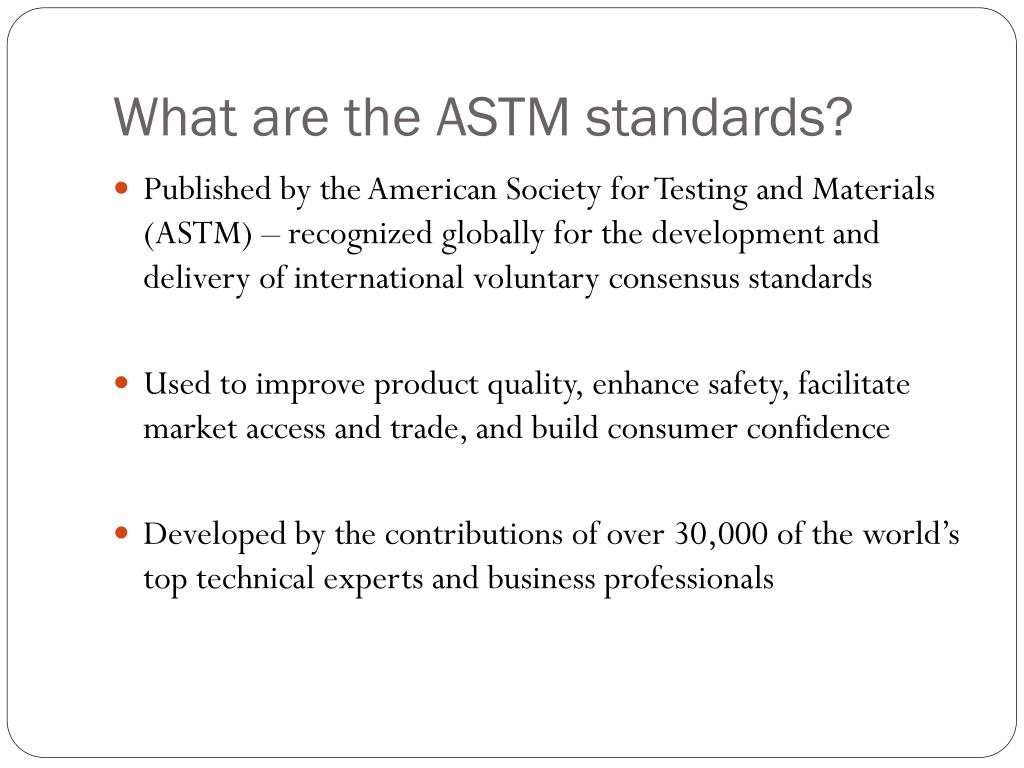Deciphering the Acronym: ASTM Definition and History
The American Society for Testing and Materials, commonly referred to as ASTM, is a globally recognized organization that plays a vital role in establishing standards for a wide range of products, materials, and services. But what does ASTM stand for? The answer lies in its rich history, which dates back to 1898 when a group of scientists and engineers came together to address the lack of standardization in the steel industry. Over time, ASTM has evolved to become a leading developer of voluntary consensus standards, with its impact felt across various industries, from construction and manufacturing to healthcare and consumer products. Today, ASTM is a premier standards organization, with its full form – American Society for Testing and Materials – reflecting its commitment to ensuring the quality and safety of products and materials.
How to Understand ASTM Standards and Their Applications
ASTM standards are a set of guidelines that provide a common language and framework for ensuring the quality and safety of products, materials, and services. But what does ASTM stand for, and how do these standards impact various industries? ASTM standards are developed through a consensus-based process, involving industry experts, manufacturers, and regulatory bodies. This collaborative approach ensures that the standards are relevant, effective, and widely adopted. The scope of ASTM standards is vast, covering everything from construction materials and consumer products to medical devices and environmental sustainability. By understanding the purpose and application of ASTM standards, businesses and organizations can ensure compliance, reduce risks, and improve overall performance.
The Role of ASTM in Ensuring Quality and Safety
The impact of ASTM standards is felt across various industries, from construction and manufacturing to healthcare and consumer products. By establishing a common language and framework for quality and safety, ASTM standards play a crucial role in preventing accidents, ensuring compliance, and promoting innovation. In the construction industry, ASTM standards for building materials and components help ensure that structures are safe and durable. In manufacturing, ASTM standards for product testing and inspection help reduce defects and improve overall quality. In healthcare, ASTM standards for medical devices and equipment help ensure patient safety and improve treatment outcomes. By understanding what ASTM stands for and its significance in these industries, businesses and organizations can better appreciate the importance of compliance and certification.
ASTM vs. Other Standards Organizations: What Sets Them Apart
ASTM is one of several prominent standards organizations that shape industries and promote excellence. But what sets ASTM apart from other organizations, such as ISO and ANSI? Understanding the unique strengths, weaknesses, and areas of focus of each organization can help businesses and organizations make informed decisions about which standards to adopt. ISO, or the International Organization for Standardization, is a global standards body that develops standards for a wide range of industries. ANSI, or the American National Standards Institute, is a private organization that coordinates the development of voluntary national standards in the United States. ASTM, on the other hand, is a non-profit organization that focuses specifically on developing standards for materials, products, and services. While all three organizations share the goal of promoting quality and safety, their approaches and areas of focus differ. By understanding what ASTM stands for and its role in the standards landscape, businesses and organizations can better navigate the complex world of standards and certification.
Real-World Applications of ASTM Standards: Case Studies and Examples
ASTM standards have far-reaching implications in various industries, and their applications are diverse and widespread. For instance, in the construction industry, ASTM standards for concrete and steel help ensure that buildings are safe and durable. In the manufacturing sector, ASTM standards for product testing and inspection help reduce defects and improve overall quality. In the healthcare industry, ASTM standards for medical devices and equipment help ensure patient safety and improve treatment outcomes. For example, ASTM standard F2923-11 provides guidelines for the testing and evaluation of medical face masks, ensuring that they meet certain standards for filtration efficiency and breathability. Similarly, ASTM standard D638-14 provides guidelines for the testing of plastics, ensuring that they meet certain standards for strength, durability, and resistance to chemicals. By understanding what ASTM stands for and its significance in these industries, businesses and organizations can better appreciate the importance of compliance and certification.
Another example of the real-world application of ASTM standards is in the development of new materials. For instance, researchers and manufacturers are increasingly turning to ASTM standards for the development of sustainable and eco-friendly materials. ASTM standard D7078-12, for example, provides guidelines for the testing and evaluation of biodegradable plastics, ensuring that they meet certain standards for compostability and environmental sustainability. By adopting ASTM standards, businesses and organizations can ensure that their products meet certain standards for quality, safety, and sustainability, which can help improve their reputation and competitiveness in the market.
The Future of ASTM: Emerging Trends and Innovations
As industries continue to evolve and new technologies emerge, ASTM standards must adapt to meet the changing needs of businesses and organizations. One of the key emerging trends in the field of standards development is the increasing focus on sustainability and environmental responsibility. ASTM is responding to this trend by developing new standards for sustainable materials, energy efficiency, and environmental stewardship. For example, ASTM standard D7761-11 provides guidelines for the evaluation of environmental sustainability in buildings, while ASTM standard D8081-17 provides guidelines for the testing and evaluation of biodegradable plastics.
Another emerging trend is the growing importance of digitalization and data analytics in standards development. ASTM is leveraging digital technologies to improve the efficiency and effectiveness of its standards development process, from online collaboration tools to artificial intelligence-powered data analysis. This will enable ASTM to respond more quickly to emerging trends and innovations, and to provide more targeted and effective standards for industries.
In addition, ASTM is also exploring new areas of focus, such as additive manufacturing and nanotechnology. As these technologies continue to evolve and become more widespread, ASTM standards will play a critical role in ensuring their safety, quality, and reliability. By understanding what ASTM stands for and its role in shaping industries, businesses and organizations can better appreciate the importance of staying ahead of the curve and embracing emerging trends and innovations.
Why ASTM Matters: The Benefits of Compliance and Certification
ASTM compliance and certification are essential for businesses and organizations that want to ensure the quality and safety of their products and materials. By adhering to ASTM standards, companies can reap a range of benefits, including improved quality, increased efficiency, and enhanced reputation. For instance, ASTM certification can provide a competitive edge in the market, as it demonstrates a commitment to excellence and a willingness to invest in quality. Moreover, ASTM compliance can help reduce the risk of accidents and defects, which can lead to costly recalls and reputational damage.
In addition, ASTM certification can also open up new business opportunities and markets. Many governments and industries require ASTM certification as a condition of doing business, so companies that are certified can tap into these markets and expand their customer base. Furthermore, ASTM certification can also help companies to reduce costs and improve efficiency, as it provides a framework for quality control and process improvement. By understanding what ASTM stands for and its significance in various industries, businesses and organizations can appreciate the importance of compliance and certification.
Ultimately, ASTM compliance and certification are essential for any business or organization that wants to ensure the quality and safety of its products and materials. By investing in ASTM certification, companies can demonstrate their commitment to excellence and reap the benefits of improved quality, increased efficiency, and enhanced reputation. Whether you’re a manufacturer, a supplier, or a consumer, ASTM standards play a critical role in ensuring that products and materials meet certain standards of quality and safety. By embracing ASTM compliance and certification, businesses and organizations can unlock the full potential of their products and materials, and achieve excellence in their respective industries.
Conclusion: Unlocking the Power of ASTM Standards
In conclusion, ASTM standards play a vital role in ensuring the quality and safety of products and materials across various industries. By understanding what ASTM stands for and its significance in different sectors, businesses and organizations can appreciate the importance of compliance and certification. From construction to manufacturing, and from healthcare to consumer products, ASTM standards provide a framework for quality control, process improvement, and innovation.
Throughout this comprehensive guide, we have explored the world of ASTM standards, from their definition and history to their applications, impact, and future trends. We have seen how ASTM standards can help prevent accidents, ensure compliance, and promote innovation, and how they can provide a competitive edge in the market. By embracing ASTM compliance and certification, businesses and organizations can unlock the full potential of their products and materials, and achieve excellence in their respective industries.
As we move forward in an increasingly complex and interconnected world, the importance of ASTM standards will only continue to grow. By staying up-to-date with the latest developments and trends in the field of standards development and implementation, businesses and organizations can stay ahead of the curve and reap the benefits of improved quality, increased efficiency, and enhanced reputation. Whether you’re a manufacturer, a supplier, or a consumer, ASTM standards are an essential part of the quality and safety landscape, and understanding what ASTM stands for is crucial for success in today’s fast-paced and competitive market.







